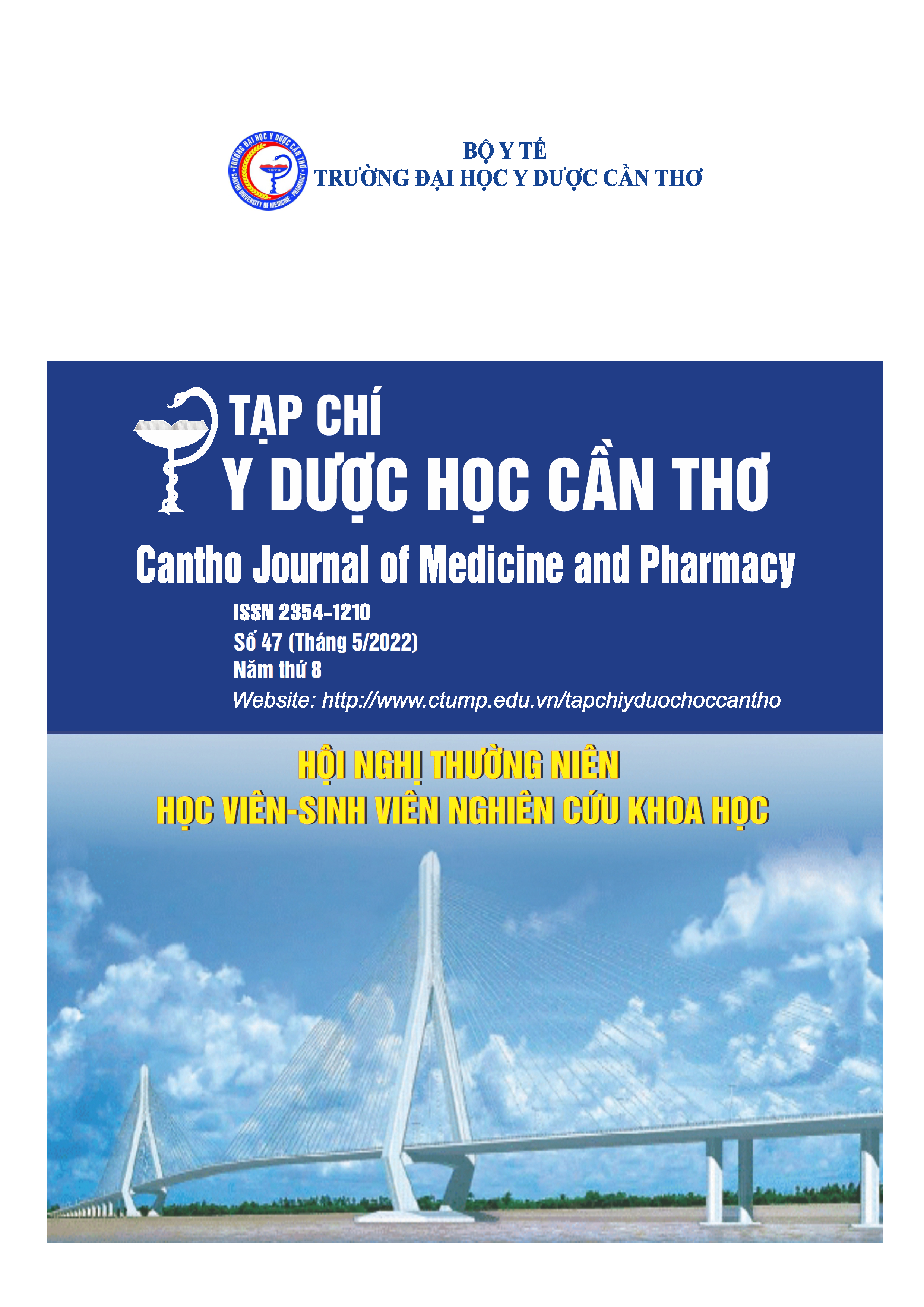The prevalence and some related factors to left ventricular hypertrophy in peritoneal dialysis patients
Main Article Content
Abstract
Background: Cardiovascular complications are the main cause of mortality in peritoneal dialysis (PD)[5]. Left ventricular hypertrophy (LVH) is common in dialysis patients and an independent predictor of mortality. Objective: To describe and compare percentages, some related factors to LVH in PD patients and hemodialysis (HD) patients. Materials and methods: A controlled, descriptive cross-sectional study on 148 patients ≥ 18 years old, duration of dialysis ≥ 3 months at Can Tho General Hospital, including 74 PD patients and 74 HD patients (control group).
Results: The percentage of LVH in the group of patients on PD was 86.5% (90.6% as concentric hypertrophy, 9.4% as eccentric hypertrophy) similar to the control group (HD) was 90.5% (86.6% as concentric hypertrophy, 13.4% as eccentric hypertrophy). Left ventricular mass index (LVMI) of patient PD had positive correlation with duration of dialysis (r=0.2), systolic blood pressure (r=0.54), diastolic blood pressure (r=0.419) and negative correlated with Hb (r=-0.363), urine 24- hour volume (r=-0.448) in univariate analysis. In multivariable logistic analysis, loss of residual renal function was an independent risk factor for LVH in PD patients. There was no difference in factors related to left ventricular hypertrophy between peritoneal dialysis patients and the control group (HD) (p<0.05). Conclusions: LVH high percentage in PD and HD patients, similar; there is no difference in factors related to LVH in two group. In PD patients, loss of residual renal function is an independent risk factor for LVH.
Article Details
Keywords
Left ventricular hypertrophy, peritoneal dialysis
References
2. AYM Wang and et al. (2007), Epidemiology of cardiovascular problems in Chinese continuous ambulatory peritoneal dialysis patients: prevalence, severity, and risk factors, Hong Kong Med J, 13(2), pp.33-6.
3. Enia and et al. (2001), Long‐term CAPD patients are volume expanded and display more severe left ventricular hypertrophy than haemodialysis patients, Nephrology Dialysis Transplantation, 16(7), pp.1459-1464.
4. Kalender, B., & Eren, N. (2013), The Association with Cardiovascular Events and Residual Renal Function in Peritoneal Dialysis, IntechOpen.
5. Locatelli F, Covic A, Chazot C and et al. (2000), Hypertension and cardiovascular risk assessment in dialysis patients, Nephrol Dial Transplant, 15, pp.69-80.
6. London, G. M., Guerin, A. P., & Marchais, S. J. (1994), Pathophysiology of left ventricular hypertrophy in dialysis patients, Blood Purification, 12(4-5), pp.277-283.
7. Savage, D. D., Garrison, R. J., Kannel, W. B., Levy, D., Anderson, S. J., Stokes, J. 3., ... & Castelli, W. P. (1987), The spectrum of left ventricular hypertrophy in a general population sample: the Framingham Study, Circulation, 75(1 Pt 2), I26-33.
8. Thompson S, James M, Wiebe N, Hemmelgarn B, Manns B, Klarenbach S, et al. (2015), Cause of death in patients with reduced kidney function, J Am Soc Nephrol, 26 (10), pp.2504-2511.
9. Wang and et al. (2004), Inflammation, residual kidney function, and cardiac hypertrophy are interrelated and combine adversely to enhance mortality and cardiovascular death risk of peritoneal dialysis patients, Journal of the American Society of Nephrology, 15(8), pp.2186-2194.
10. Woo and et al. (2002), A novel association between residual renal function and left ventricular hypertrophy in peritoneal dialysis patients, Kidney international, 62 (2), 639-647.


